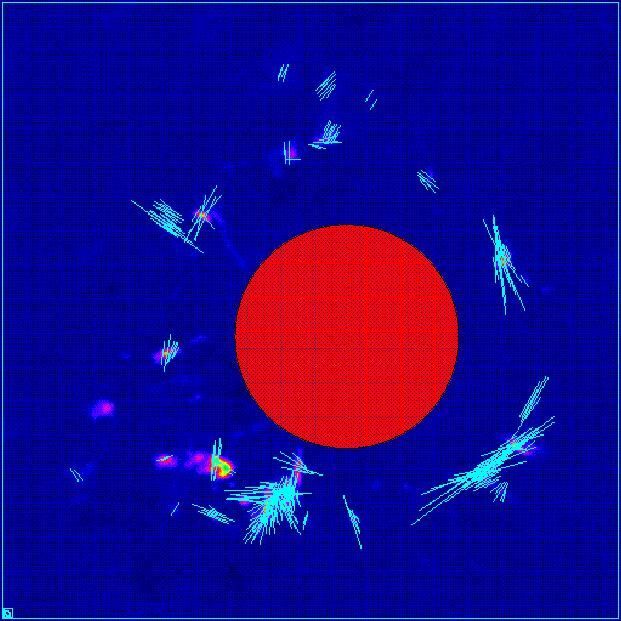TX Cam - Polarization
Description
VLBA image of the star TX Cam, showing "spots" of maser emission (blue, purple and yellow) from Silicon Monoxide (SiO) molecules forming a shell around the star. Approximate size of the star is indicated by red circle (artifically added to image). The maser spots are where the SiO molecules are amplifying radio emission at a frequency of 43 GHz. Blue lines indicate the relative strength and orientation of the electric field vectors in the received radio emission. The orientation provides an indication of the orientation of the star's magnetic field. The magnetic field can be either parallel or perpendicular to these vectors depending on the angle between the magnetic field direction and the line of sight. In most of the inner parts of the star's atmosphere, the magnetic field is probably parallel to the surface of the star. In areas where this pattern is significantly disturbed, researchers believe accelerated mass loss is taking place.
Creator
Legacy Astronomical Images
Rights
NRAO/AUI/NSF does not hold full copyright for this image. Contact the archivist for details.
Type
Legacy Astronomical Image
Object Name
TX CAM
Investigators
Athol Kemball, Philip Diamond
Telescope
Very Long Baseline Array (VLBA)
Observation Date
1994-12-01
Type of Observation
spectral line
Center of Image
RA 5:0:50.400, Dec: 56:10:53.000 (J2000)
Field of View
0.000014 x 0.000014 degrees
Link to journal article
Series
Galactic Sources Series
Unit
Stars Unit
Citation
Legacy Astronomical Images, “TX Cam - Polarization,” NRAO/AUI Archives, accessed April 1, 2025, https://www.nrao.edu/archives/items/show/33506.

